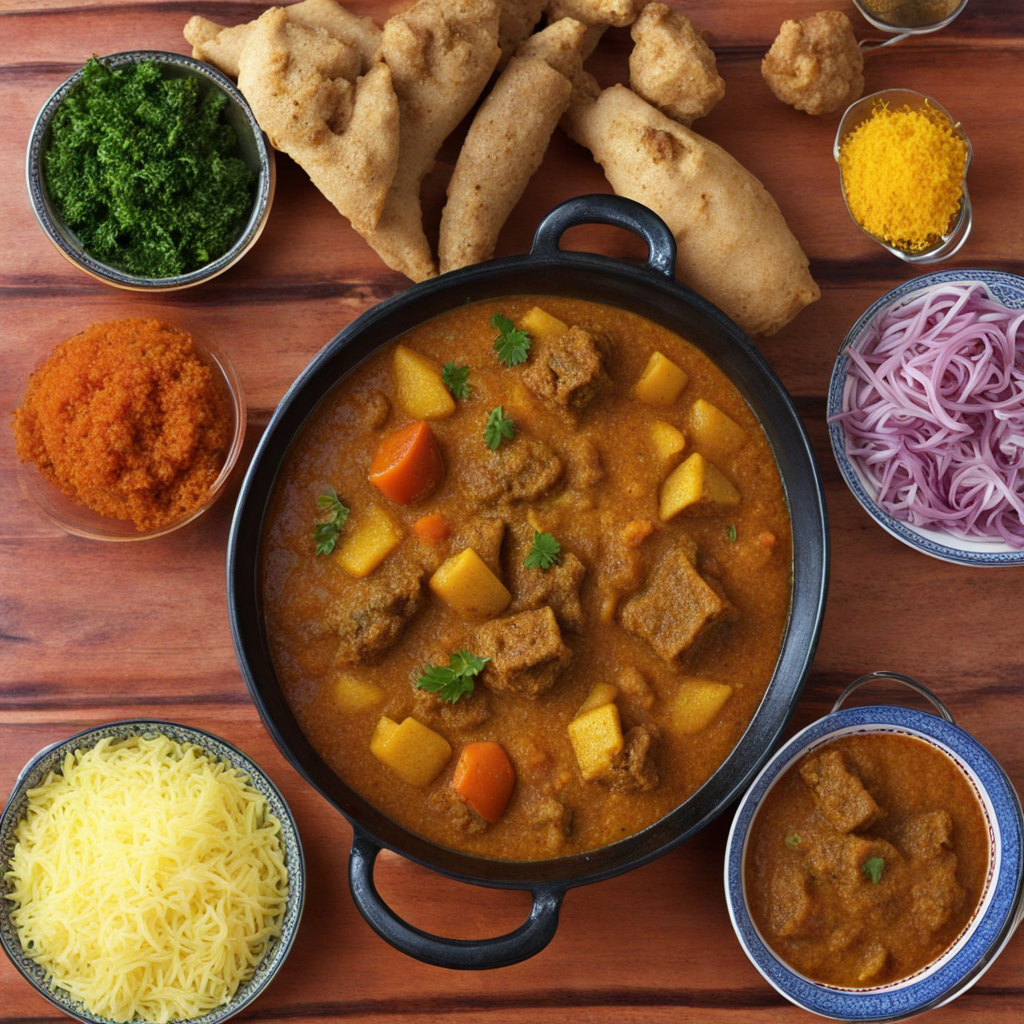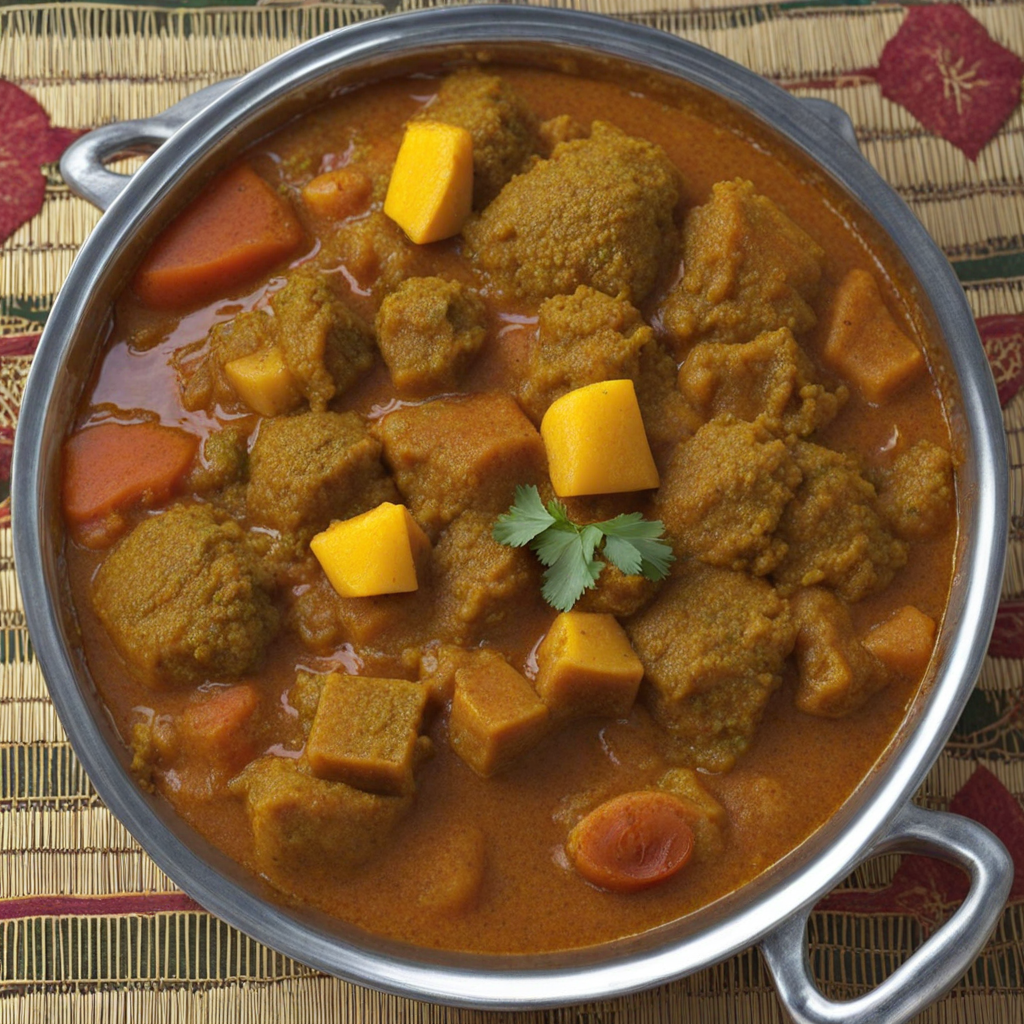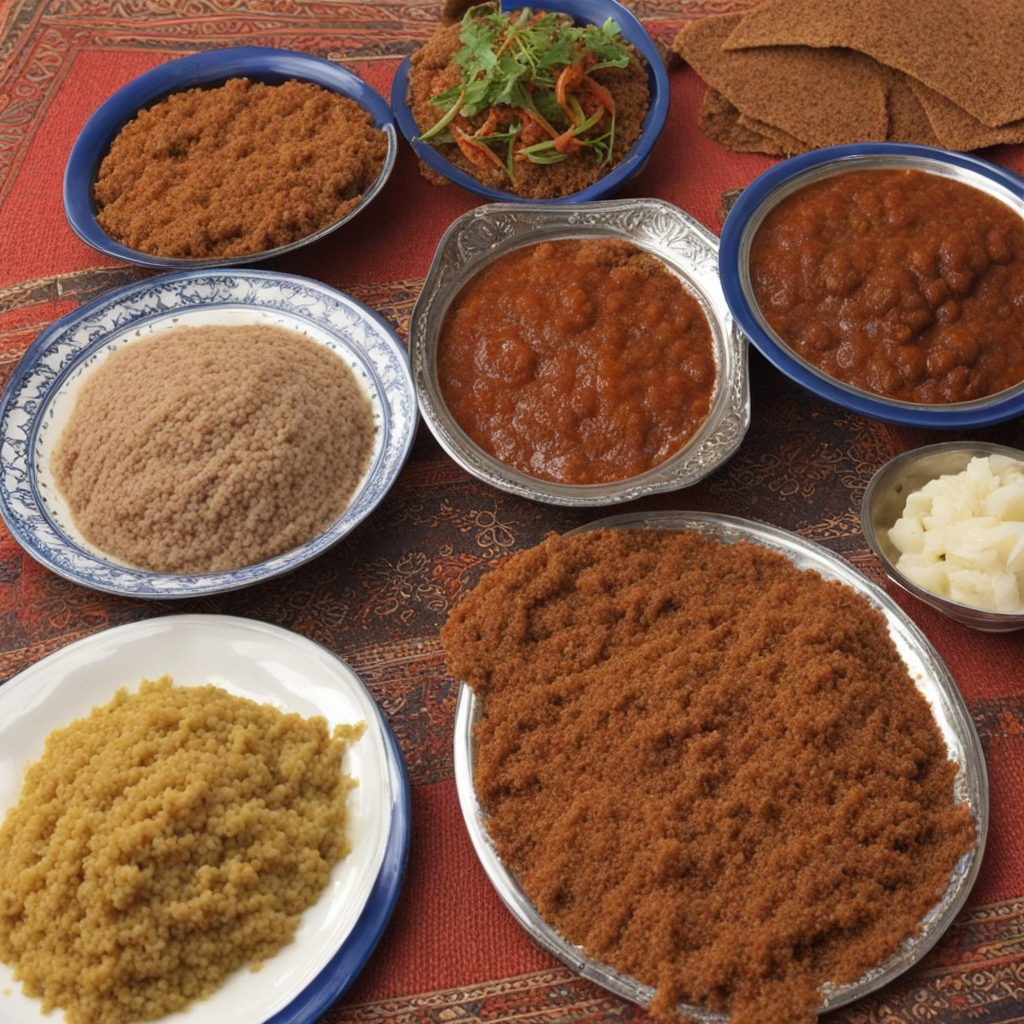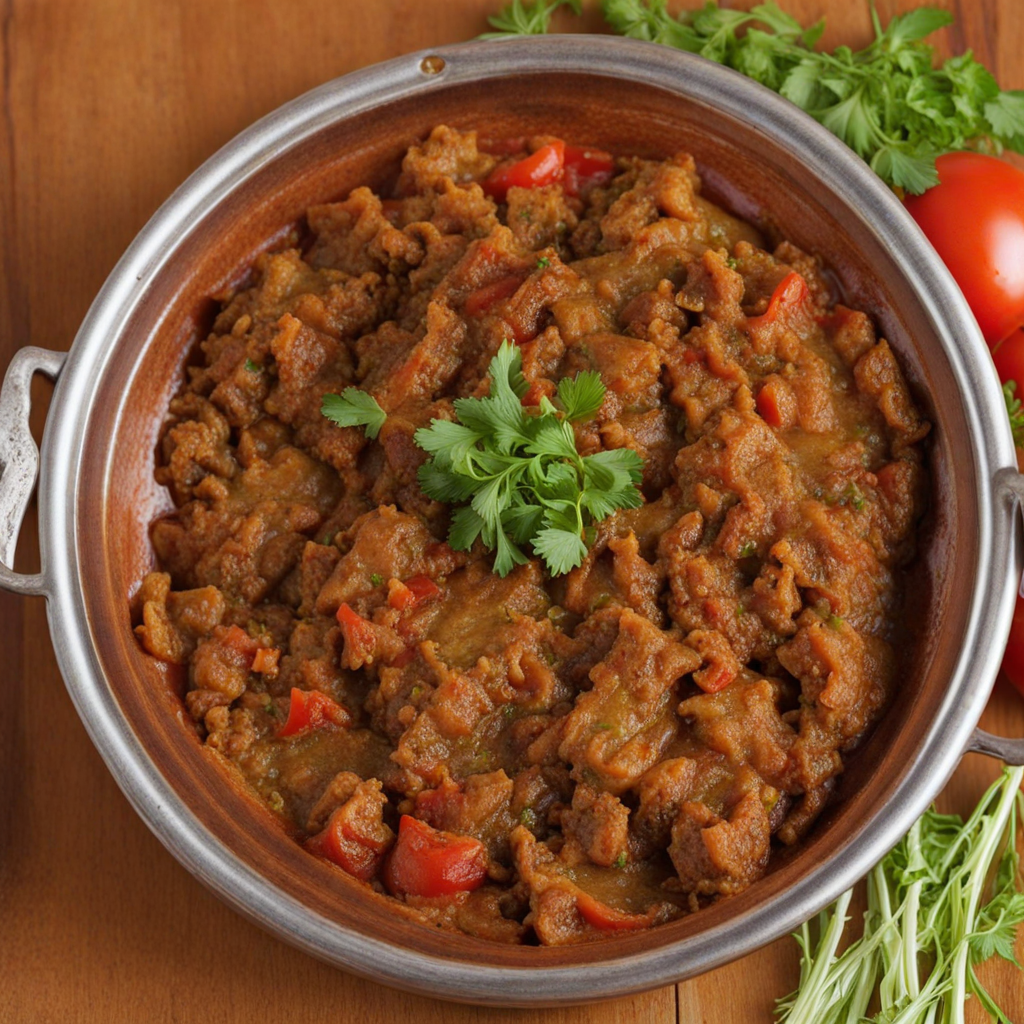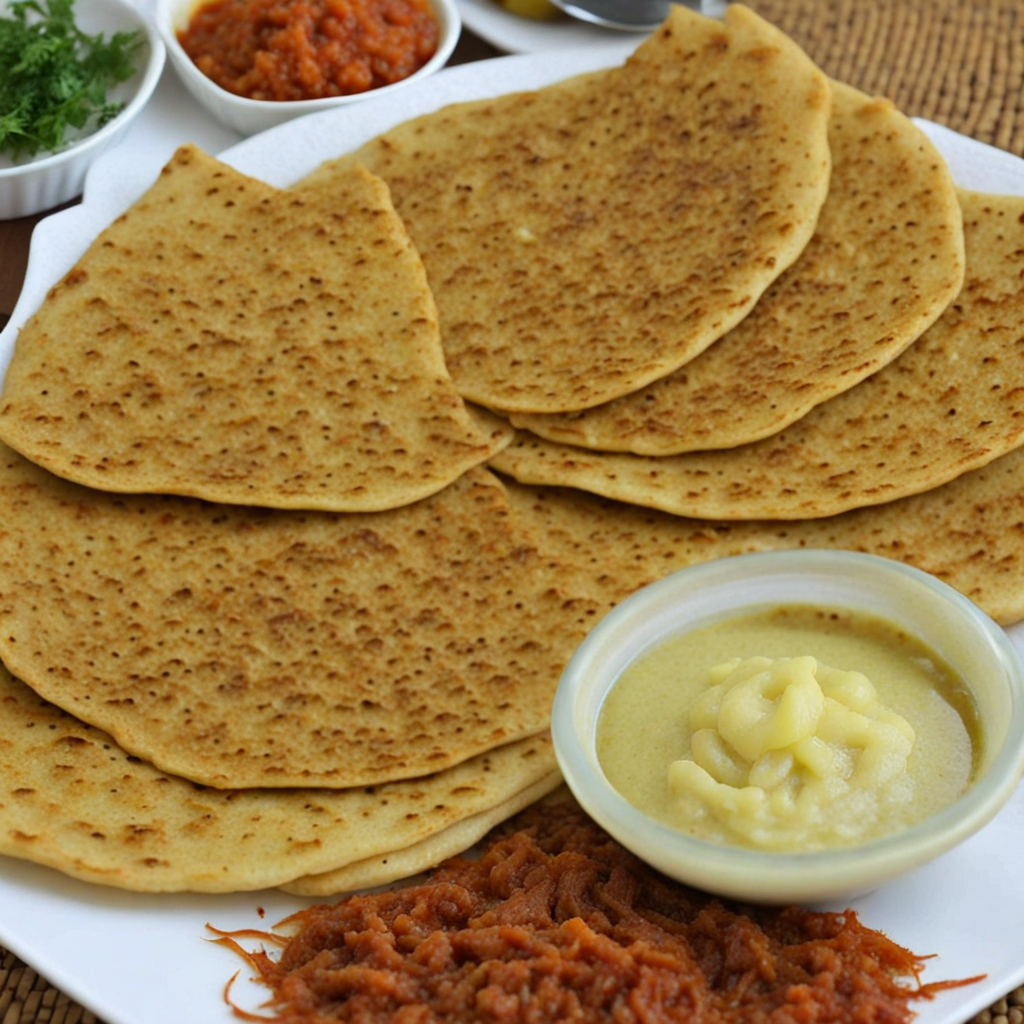Alicha
Alicha is a traditional Eritrean dish that showcases the vibrant flavors and rich culinary heritage of the region. This mildly spiced stew is typically made with a variety of vegetables, such as carrots, potatoes, and sometimes green beans, all beautifully combined with aromatic spices like turmeric, ginger, and garlic. The golden hue of the dish, primarily derived from turmeric, not only adds to its visual appeal but also infuses the stew with a warm, earthy flavor that is both comforting and satisfying. One of the hallmarks of Alicha is its versatility; it can be prepared as a vegetarian delight or enhanced with the addition of meat, often chicken or lamb, making it a great option for diverse dietary preferences. The slow cooking process allows the ingredients to meld together, creating a harmonious blend of textures and flavors. Served alongside injera, a traditional sourdough flatbread, Alicha becomes an integral part of the communal dining experience, where diners scoop the stew with pieces of injera, soaking up the delicious flavors with each bite. The overall experience of enjoying Alicha is one of warmth and hospitality, as it is often served during gatherings or special occasions. Its comforting nature, combined with the wholesome ingredients, makes it a perfect dish for anyone looking to explore the culinary landscape of Eritrea. The combination of spices, vegetables, and the unique serving style invites you to savor each mouthful, leaving you with a lasting impression of the rich flavors and cultural significance of this beloved Eritrean dish.
How It Became This Dish
The History of ኣሊጻ (Alitsha) from Eritrea #### Origins of Alitsha Alitsha, known as ኣሊጻ in Tigrinya, is a traditional Eritrean dish that embodies the rich cultural tapestry of the region. It is primarily made from a fermented mixture of grains, typically consisting of barley or wheat, which are ground into flour and mixed with water to create a thick porridge. This dish is often likened to porridge or gruel but is distinct in its preparation and fermentation process, imbuing it with a unique flavor and texture that is cherished by many Eritreans. The origins of Alitsha can be traced back to ancient agricultural practices in the Horn of Africa, where the cultivation of grains played a vital role in the sustenance of local communities. Archaeological evidence suggests that the domestication of barley and other grains occurred in this region thousands of years ago, making it one of the earliest areas for grain cultivation. As communities settled and agriculture flourished, the need for efficient food preservation and fermentation arose, leading to the development of dishes like Alitsha. #### Cultural Significance Alitsha holds a significant place in Eritrean culture, serving not only as a staple food but also as a symbol of community and tradition. It is often prepared during special occasions, family gatherings, and religious ceremonies, emphasizing the importance of food in fostering connections among people. The preparation of Alitsha is typically a communal activity; families and neighbors gather to make the dish together, reinforcing social bonds and cultural identity. In Eritrean society, meals are an important aspect of hospitality. When visitors arrive, offering Alitsha is a gesture of warmth and welcome, highlighting its role in social interactions. This communal aspect of food preparation and consumption underscores the values of sharing and togetherness that are integral to Eritrean culture. Moreover, Alitsha is frequently associated with traditional rituals and celebrations, such as weddings and festivals. In these contexts, the dish is often served alongside other traditional foods, creating a rich and diverse culinary experience that reflects the region's agricultural bounty and cultural heritage. #### Development Over Time As Eritrea underwent various historical changes—from colonial rule to independence—so too did its culinary practices, including the preparation and consumption of Alitsha. The Italian colonization in the late 19th and early 20th centuries introduced new ingredients and cooking techniques to the region, influencing local cuisine. However, traditional dishes like Alitsha remained rooted in the Eritrean way of life, adapting to changing circumstances while retaining their core significance. With Eritrea's independence in 1993, there was a resurgence of national pride in traditional foods, including Alitsha. This revival was part of a broader movement to reclaim and celebrate Eritrean identity and heritage after years of conflict and foreign influence. Alitsha became emblematic of this cultural renaissance, representing resilience and continuity amid change. In contemporary Eritrea, Alitsha is not only enjoyed by locals but has also garnered attention from the diaspora communities around the world. Eritrean immigrants have brought their culinary traditions with them, introducing Alitsha to new audiences and adapting the dish to suit different palates while maintaining its essence. This globalization of Eritrean cuisine has led to a greater appreciation for Alitsha, with many Eritrean restaurants emerging in cities across Europe, North America, and beyond. #### Modern Variations and Health Benefits Today, Alitsha is enjoyed in various forms, with some modern adaptations incorporating different grains, such as millet or sorghum, and even incorporating legumes for added protein. While the traditional method of fermentation is still prized, some cooks have embraced quicker preparation techniques, reflecting the fast-paced lifestyle of contemporary society. Health-wise, Alitsha is celebrated for its nutritional benefits. The fermentation process enhances the bioavailability of nutrients, making it easier for the body to absorb vitamins and minerals. Furthermore, it is often consumed with a variety of accompaniments, such as vegetables, stews, and sauces, making it a versatile dish that can be tailored to meet diverse dietary needs. The dish has also attracted attention from health-conscious consumers who appreciate the benefits of fermented foods. In recent years, there has been a growing trend towards incorporating traditional and fermented foods into modern diets for their probiotic properties, which support gut health and overall well-being. #### Conclusion Alitsha is more than just a dish; it is a narrative woven into the fabric of Eritrean history and culture. Its origins reflect the agricultural practices of ancient communities, while its significance in social gatherings and celebrations underscores the values of hospitality and togetherness. As Eritrea continues to evolve, Alitsha remains a steadfast reminder of the country's rich culinary heritage and the resilience of its people. From its humble beginnings as a staple food for local communities to its modern adaptations in a globalized world, Alitsha encapsulates the spirit of Eritrea—one that honors tradition while embracing change. As more individuals discover and appreciate this unique dish, Alitsha stands poised to share its story far beyond the borders of Eritrea, inviting others to partake in the flavors and traditions of this vibrant culture.
You may like
Discover local flavors from Eritrea


